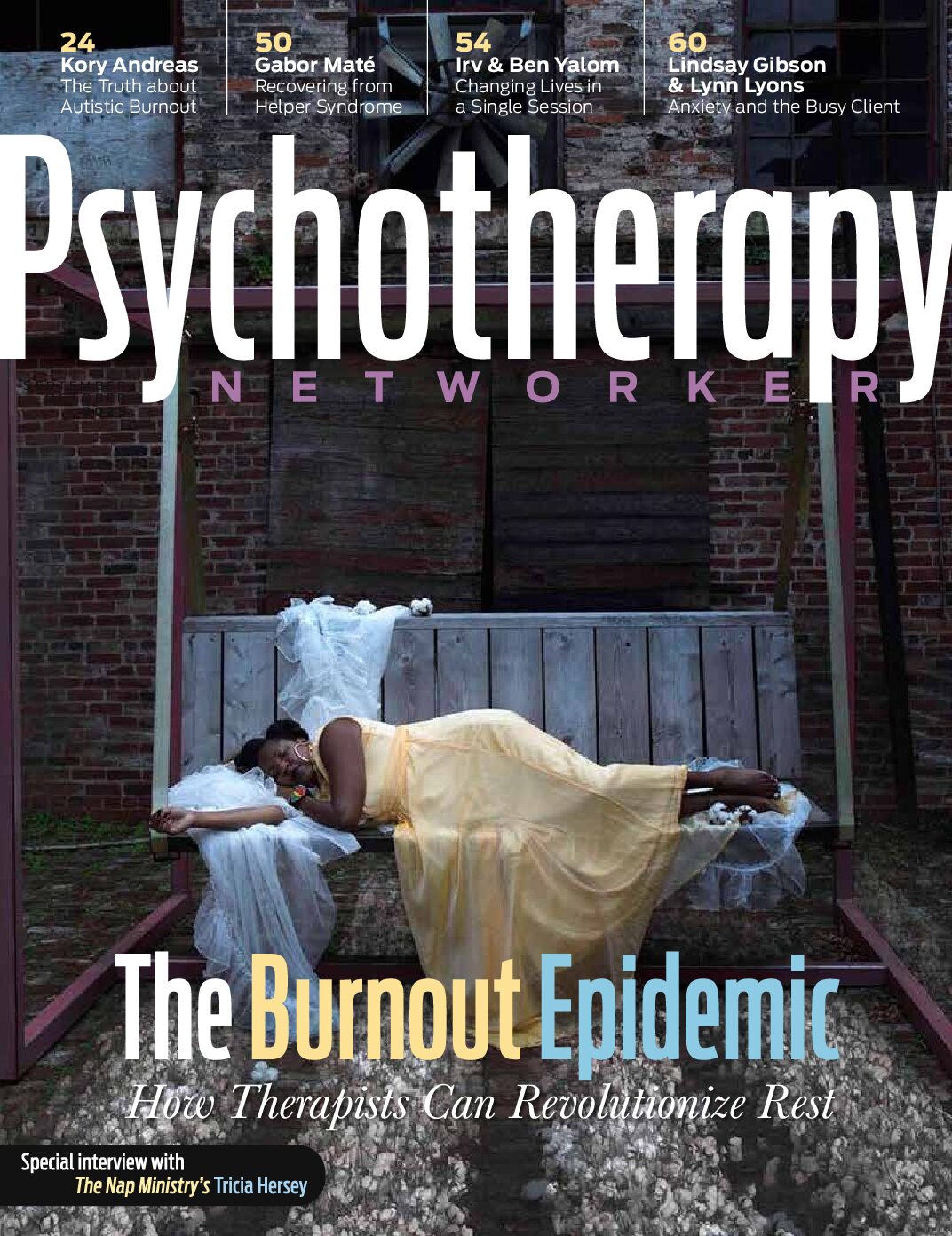Imagine, for a moment, that you have a child with a physical or cognitive disability who needs accommodations at school. They see a clinical psychologist once a week, work with a speech therapist twice a month, and visit a pediatrician regularly. You have an open line of communication with the school’s teachers, administrators, and counselor. Each of these professionals is aware of your child’s educational needs, and each offers suggestions to help them reach their educational goals. In short, there’s a small army developing a plan to put your child on the path to success.
Sounds like a best-case scenario, right? Perhaps not. For many parents whose child needs an individualized education program (IEP), that small army tends to be fractured and siloed. This may sound familiar to therapists, sometimes brought into IEP meetings by parents or school officials to serve as consultants—or, if deliberations turn adversarial, as mediators or advocates for a particular side.
A legal document that outlines special education procedures for students with disabilities, the IEP has been a fixture in public schools since 1975. It was designed to ensure that all eligible children receive what the Individuals with Disabilities Education Act describes as a “free, appropriate public education” under the “least restrictive environment.” Under the law, the federal government covers up to 40 percent of per-student costs for special education services like speech therapy, occupational or physical therapy, interpreters, medical services, and orientation and mobility services. The child’s school covers the remainder.
To qualify for an IEP, students must meet at least one of 14 criteria, including being diagnosed with autism, blindness, deafness, developmental delays, emotional and behavioral disorders, hearing impairment, orthopedic impairment, and speech or language impairment. But even with this array of criteria, schools and local governments are often slow—or downright resistant—to approve IEPs.
According to a 2019 JAMA Pediatrics study, one in six students—16.6 percent of all students—has a mental health disorder. But according to Mental Health America’s 2022 The State of Mental Health in America report, only 0.76 percent of students have an individualized education program. One reason many schools are slow to approve IEPs: special education can be costly. In addition, a 2018 report by the National Council on Disability reveals that the federal government is paying less than half of what it promised to provide in 1975, funding only 17 percent of costs and leaving schools to pick up the slack.
“Generally, the numbers of students with IEPs have been declining for the last 20 years,” says Mental Health America CEO and President Paul Gionfriddo. “And that isn’t because kids are mentally healthier than they’ve ever been before.”
Although each state determines its own laws regarding IEPs and how they should be followed, on paper, the process generally looks like this: the school determines the student’s eligibility for an IEP, and if approved, a team is convened comprising the child’s parents or guardians, a special education teacher, a general education teacher, a school official who’s knowledgeable about available resources, and a school counselor or psychologist. The idea is that, together, they’ll assess the child’s current academic and functional performance, create measurable goals and a timeline for reaching them, assign duties to each party present, and set up a reporting system. After a year, they’ll review the child’s progress and update the plan as needed.
In some cases, parents are also working with outside providers, like private speech or occupational therapists, psychotherapists, tutors, and even lawyers, who may have helped them game-plan—or push back against stubborn school officials. Parents may come to meetings with test results and recommendations provided by these outside professionals, and in some cases, a professional may be invited to attend an IEP meeting in person (by law, parents are allowed to bring a consultant or advocate along). But even when the input of these advocates is welcomed in meetings, the fractured nature of working with disparate providers can create ongoing headaches for parents, who become the de facto intermediaries for people who have significantly different expectations of their child’s abilities and potential.
Like Passing Ships
None of this comes as a surprise to Connie Lillas. An early childhood and family therapist currently in private practice, she’s spent the last 25 years challenging multiple school district officials in southern California over their treatment of her young clients, whose behaviors they often deem noncompliant. Lillas says these officials commonly—and erroneously—use terms like attention seeking, avoidant, and escape behaviors when describing these children.
For Lillas, these descriptors are damaging—and setting the record straight is personal. When her son was born prematurely 28 years ago, he’d suffered from intrauterine growth retardation, and spent nearly a month recovering in the hospital’s neonatal intensive care unit. When he was released, he had trouble self-regulating and cried often. In preschool, he had frequent meltdowns and struggled to get into a calm state, where he could absorb what was happening in the classroom.
The same labels Lillas would eventually encounter in her work the school officials applied toward her son, often suggesting that they were the source of his distress. Their recommendations? More boundaries and more punishments.
Lillas was shocked. She knew there was more to why her son behaved the way he did: his restlessness and agitation were stress responses. Since his nervous system had been damaged in utero from being malnourished, his stress-detecting system was heightened. His dysregulation was often due to hunger, sensory overstimulation, and fatigue, not willful misbehavior. As much as she tried to educate the officials, they stood by their assessment, often ignoring any consideration of stress responses.
Lillas was baffled. “I remember thinking, My child is a lot more complicated than this,” she says. “And if someone’s going to slap these inflammatory labels on him, then we’re in trouble.”
Over the next five years, Lillas went from practitioner to practitioner, looking to help her son. She met with pediatricians, speech and language therapists, occupational therapists, and behavioral specialists. Each was skilled and caring, Lillas says. There was only one problem: they didn’t speak to one another.
“They’d make their assessments and share their points of view, but they didn’t have a common language or a shared approach,” Lillas explains. “There was no coordinated care, no collaboration. It was like each person thought their specialty was the whole pie, instead of just a piece of it.”
Years later, with clients, those fragmentations would extend into IEP meetings at school.
“You’d come to a meeting, and everybody would have their own opinion about a child’s challenging behaviors,” she says. “Sure, specialization is important, but what’s often lacking is a gestalt of a whole and an understanding of your position in it. Say you have a child who has autism and epilepsy, and the school nurse is just focusing on making sure he gets epileptic meds. That’s great, but it does nothing to address his stress responses or triggers.”
Worn down by his school’s lack of understanding and his specialists’ lack of collaboration, Lillas did what so many parents in these situations are often forced to do: she decided to homeschool her son until his regulatory system was in a better state and he’d be better able to handle potentially stressful environments.
It was time to catch a breath and plan next steps—an opportunity she knew not everyone with a neurodivergent child has. This is insane, she recalls thinking. “I was in my early 40s, extremely educated, privileged, and this was hard for me? What about marginalized communities, or people who are disadvantaged, or people without the resources I had?”
The schools’ shortsightedness, the specialists’ lone-wolf mentalities—all of it needed to change, Lillas thought to herself. For her son’s sake, and for her clients’.
Swimming Lessons
A lack of team cohesion isn’t the only shortcoming in the IEP process, says therapist Lynn Lyons, who’s been doing trainings and consulting at schools for 15 years. When it comes to treating issues like anxiety and depression, she says, IEPs often have the opposite effect of what’s intended. And that, she says “makes my job a lot harder.”
“To be honest,” Lyons explains, “a lot of people creating these plans aren’t well-versed in best practices to treat anxiety and depression. They tend to focus on helping the child avoid things that are triggering. That’s the nature of accommodation plans: keeping the child comfortable and helping them avoid feeling distressed.” Instead, Lyons says, IEP teams need to find ways to help kids develop the skills to lean into and eventually overcome their distressing feelings.
She also says IEP objectives are usually broad or vague, and that it’s common to see language in an IEP such as “Student will seek out support as needed” or “Child will use coping strategies as needed.” Lyons laughs. “It’s like trying to teach someone to swim and your goal says, ‘Student will swim when in water.’ Well, we’ve got to teach them how to do it!”
Lyons says when she’s brought in to consult on developing an IEP, she works backward. “I’ll ask, ‘If this plan were to be successful, what would we see?’ And then I’ll ask, ‘Well, what skills do we have to build, and who’s going to be building them?’”
Lyons recently sat in an IEP meeting for a 10-year-old boy whose anxiety was making it difficult for him to stay in the classroom. Previously, he’d been given permission to leave the room when he got anxious and go to the counseling office until he felt better. But, as Lyons pointed out, that was only reinforcing the boy’s anxiety, and he’d spend four or five hours in the office before returning to class. “Well,” his teacher countered, “then what do we do when he’s upset?”
Lyons worked with the school counselor to develop a list of tasks the boy would perform once in his office to gradually reduce his anxiety and get him back to class within 15 minutes. “We did some work ahead of time so he could recognize worry when it happened,” she says. “That way he could name it and have some effective responses to it. Lots of kids find it helpful to respond to anxiety by moving, so we said that if he showed up in the counselor’s office, we were going to have him do 30 jumping jacks. We drew up a step-by-step list of strategies he could use to get back to class as soon as possible.” Once the list was finished, the counselor taped a copy to the back of his office door so that if he happened to be away when the boy arrived, the boy could close the door and have his anti-anxiety plan at the ready.
Lyons doesn’t blame schools, or parents, or other team members for getting IEPs wrong. After all, she says, they have good intentions. But she worries about the long-term implications of setting a child up with an IEP when the bar for qualifying is so high that it relies on stating that a child is permanently disabled when, in reality, anxiety and depression can often be overcome with the right tools.
“We want kids to be diagnosed if that supports them getting good help,” Lyons says, as in cases where the child has a genetic or developmental issue or delay. “But someone with anxiety or depression being labeled permanently disabled is the opposite of what I want to happen with the people I treat,” she adds. “When it comes to IEPs, I often see parents working very hard to get someone to say their child is disabled. The way it’s set up, it’s like you have to prove how badly you’re doing in order to get help. It’s pathologizing.”
The Whole Iceberg
At the heart of IEPs—beyond matters of integrating specialties and promoting collaboration, beyond matters of building tolerance and skills—is the child. The whole child. And bringing about change takes a holistic framework, one where the goals consider the child’s overall development.
That’s the perspective of developmental psychologist Mona Delahooke, who’s often hired by parents to help IEP teams reach agreements. “I usually find myself in a bit of a mediator role,” she says, fielding disagreements between parents and school officials about what services and how much of them are necessary.
In her experience, most of these disagreements arise because school officials are quick to assume a gatekeeper role as the administrators of behavioral assessments and interventions—and because they’re keeping a close eye on their limited budgets. But Delahooke says when they take the lead in developing an IEP, they too often exclude the parents.
“In my experience,” she explains, “parents in these meetings aren’t seen as the experts on their child. Often they’ll bring me in to express their feelings and legitimize their opinions. It’s why so many parents are stressed out and traumatized by this process.”
Delahooke firmly believes that parents are almost always the true experts on their children. School officials typically refer to a child’s behaviors when planning an IEP, but parents can provide valuable information about what’s below the tip of the iceberg: the origins of those behaviors.
“We need to move away from the behavioral management business and toward a neurodevelopmental framework that respects individual differences and the human stress response,” Delahooke says. “I think that’s an important role for a therapist on an IEP team—to help everyone think a little deeper. For these kids, that can make all the difference in the world.”

So what does an integrated approach look like? According to Connie Lillas, “An occupational therapist might say, ‘This child is auditorily defensive and becomes agitated if there’s too much noise in the classroom.’ Then that therapist will turn to the teacher and ask, ‘Can we find a quiet place in the classroom for him, or get him some noise-canceling headphones or a little tent he can go into when he’s overstimulated?’ And the mental health practitioner might jump in and say, ‘That makes sense. He’s also been exposed to trauma. He witnessed gun violence in his neighborhood, so now any time he hears a popping sound, like a balloon, that’s going to send him running out of the classroom because he’s in survival mode. We have to be really careful about loud noises.’ And then the teacher jumps in and says, ‘I’ve noticed it helps when we break lessons down into bite-sized chunks, so mom and dad, can you do some priming at home?’”
It’s easier said than done, Lillas adds. “People get uncomfortable when they have to move out of their silo and incorporate new information into their assessment or intervention.” After deciding to homeschool her son, she threw herself into another project. Determined to address the fragmented care-delivery system that had frustrated her for so long, she linked up with Janiece Turnbull, a UCLA-trained pediatric neuropsychologist. Together, they spent years honing a framework that could accommodate multiple disciplines and diagnostic categories simultaneously, creating a collaborative network of providers—and in doing so, addressing the shortcomings of the IEP creation process.
After developing the framework, Lillas traveled nationally and internationally to offer trainings in it. From there, she developed an online program to walk people through its steps. That program, which debuted in January, is now publicly available to download as a free starter kit, with a more extensive manual available for purchase. A free infographic included in the kit offers a visual map that allows IEP team members to see their respective roles and how they can work in a cohesive, synchronized way. The program also includes the capability for each team member to contribute to a customized, collaborative learning plan that gets added to the IEP, essentially making it a living document, rather than something the team creates and might not revisit until the next year.
“Now each person can see their part in a whole process,” Lillas says. “So instead of saying, ‘My discipline is speech and language, or OT, or mental health, or physical health,’ everyone knows about the whole pie and that they’re a piece of it.”
Over the years, Lillas says she’s trained hundreds of families and schools in her framework, and many of them go on to share it with others. Creating that ripple effect, she says, is her life’s work.
As for Lillas’s son, now grown, he currently lives in East Los Angeles, where he’s found his passion for community advocacy and social justice issues by helping underresourced individuals and families as part of a faith-based organization. Lillas says she’s continually humbled and honored to have seen him come to thrive, in spite of his struggles. Her belief that his distress was real, and supporting his healing process, was key to his blossoming into “the most beautiful gift of a human being I could ever imagine,” she says. “For that, I am eternally grateful.”
Lillas knows there’s still work to be done. Some school districts she approaches with her model give her a warm reception; others are more rigid, arguing that as long as their students can function in class and get their work done, that’s good enough.
“I lived through something so painful, something that was so difficult to figure out,” Lillas says. “I was successful in the end, but so many people are still struggling. I want them to know that the suffering and confusion they’re feeling is normal. But there’s a way through it. If we coordinate, if we collaborate, helping our children doesn’t have to be so hard.”
Photo by iStock/DG Images
Chris Lyford
Chris Lyford is the Senior Editor at Psychotherapy Networker. Previously, he was assistant director and editor of the The Atlantic Post, where he wrote and edited news pieces on the Middle East and Africa. He also formerly worked at The Washington Post, where he wrote local feature pieces for the Metro, Sports, and Style sections. Contact: clyford@psychnetworker.org.







